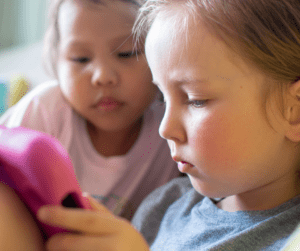Television Through a Different Lens
When it comes to autism spectrum disorder (ASD) representation in TV shows, it is crucial to showcase authentic and positive portrayals. By placing characters with autism at the center of the narrative, these shows provide an opportunity for individuals with ASD to see themselves represented on television.
Breaking New Ground on TV with Authentic Autism Representation

In the realm of television, certain shows illuminate the spectrum of autism in ways that resonate deeply with audiences, within and outside the autism community. “Young Sheldon” is one standout in this effort. The show skillfully navigates the life of a younger version of the beloved Sheldon Cooper from “The Big Bang Theory.” This series sheds light on Sheldon’s journey, touching on his brilliant mind and the hurdles he faces in social scenarios and with sensory processing.
Another gem in authentic TV representation is the heartfelt and engaging “Atypical.” This series focuses on Sam, a high school student on the autism spectrum. Throughout the show he learns about independence, love, and self-discovery. Through Sam’s eyes, viewers gain insights into the challenges and triumphs of living with autism.
These TV shows, among others, are pioneering in their representation of autism. By moving beyond stereotypes, TV can be a powerful tool for exploring the varied experiences of people on the spectrum. By featuring compelling narratives and nuanced characters, they not only entertain but also educate. In doing so, they bridge gaps in understanding and acceptance. The portrayal of characters with autism in these TV series demonstrates the importance of visibility and representation. Plus, it offers viewers a glimpse into the complexities and beauty of living on the spectrum. Representations like these are vital steps towards inclusivity, highlighting universal themes of love and resilience.
Celebrating Love and Relationships in “Love On The Spectrum”

“Love On The Spectrum” has wowed fans by providing authentic portrayals of young adults on the autism spectrum. Following its participants as they explore the world of dating and relationships, this Australian reality series is a beacon of positivity. Its funny, relatable participants reveal the varied experiences and emotions that come with seeking connection and companionship.
By focusing on the personal journeys of its participants, the show transcends the usual tropes associated with autism. It presents viewers with a unique perspective on the challenges and joys of navigating relationships through the lens of autism.
What sets “Love On The Spectrum” apart is its commitment to genuine representation. Each episode is a celebration of individuality. Showcasing the participants’ distinct personalities, aspirations, and obstacles, the series depicts a true quest for love. This approach demystifies autism for the audience and also emphasizes the universal desire for love and acceptance.
By highlighting these stories, “Love On The Spectrum” champions the importance of empathy, understanding, and support in fostering meaningful connections. The show encourages viewers to embrace differences and recognize the beauty in diversity, providing a reminder of the richness of inclusive representation. Through its candid and respectful portrayal of love on the autism spectrum, “Love On The Spectrum” continues to inspire, educate, and affirm the value of all love stories, making it a vital addition to the conversation around autism representation in TV shows.
The Unseen Spectrum: When TV Gets It Wrong
In the world of TV, not every attempt at representing autism hits the mark. There are instances where shows, even with good intentions, fall into common traps. This often looks like recycling stereotypes or crafting narratives that skew towards the sensational rather than the substantive. Such portrayals can inadvertently alienate or misinform viewers. They can distort public perception and potentially influence how individuals on the spectrum are treated in society. Misrepresentation like this can perpetuate outdated myths, negating progress made in understanding autism.
A collaborative effort towards refining how autism is depicted on TV can help us to pave the way for future stories that reflect the diversity of the autism experience. Together, we can ensure that all individuals feel seen and understood in the media they consume.
The Power of Diverse Stories and Inclusive Representation

The autism spectrum is rich and varied, and TV shows should aim to reflect this diversity accurately and sensitively. Inclusive representation goes beyond simply featuring characters with autism; it means creating and sharing narratives that honor the myriad ways autism manifests across different communities, cultures, and personal experiences.
Shows that get it right understand that there’s no one-size-fits-all depiction of autism. They strive to present a range of characters with their own unique challenges, triumphs, and perspectives, painting a fuller picture of what life on the spectrum entails.
“Pablo,” which employs a cast of children with autism to voice its characters, is a great example. Additionally, “The Good Doctor,” which focuses on a young surgeon with autism and savant syndrome, highlights how differing backgrounds and experiences contribute to the overarching narrative of autism. These series, and others like them, champion the cause of inclusivity by acknowledging that the spectrum encompasses an array of individual stories, all deserving of representation.
This endeavor to represent the spectrum’s diversity not only enriches viewers’ understanding of autism but also fosters a sense of belonging among those with autism. Seeing one’s experiences mirrored on screen can be validating and empowering, highlighting the importance of diversity not just in characters but in storylines, settings, and perspectives. It’s through this kaleidoscope of stories that TV can truly celebrate the entire autism community, offering up narratives that enlighten, engage, and inspire, all while pushing for a more inclusive and understanding society.
